Home Organization Tips For A Fully Organized Home and an Introduction to Minimalist Living
In order to get your home organized properly, you have to make sure that you prioritize and tackle the ones that matter first. We’ve compiled a complete 3 step program with home organization tips to get you on the road to an organized home that will be safe, clean and decluttered. If you’d like to take the extra step to live a minimalist lifestyle, we encourage that too.
Skip To Your Step
Maintain Your Home to Start the Organization Process
The first step to an organized home is to make sure that the space is safe. Safe from intruders on the outside, but on the inside too. Bugs, pests or anything that could harm the integrity of your home and your personal health - hard water issues included - is considered an intruder.
In order to make sure your home is safe, you'll need to maintain everything in your home regularly. And this means you will not only want to install some in-home pest control solutions, or specialized home filtration mechanisms that will remove all contaminants from your water, but also safety systems that will make sure you are fully protected 24 hours a day, alongside standard windows and doors quality check-up.
First rule of thumb is to make sure that all of your smoke alarms are working with fresh batteries. Check all locks, door knobs, doorbell cameras and windows to make sure they close and lock securely. If you have little ones, make sure your house is childproof. Now that everyone inside is safe, you can focus on the safety of the house.
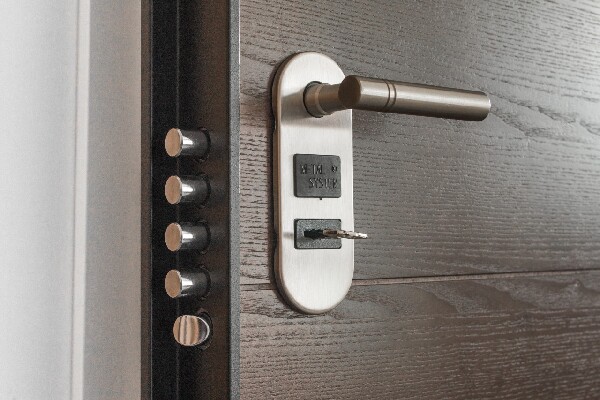
Safe For The Harsher Seasons
Before the harsh seasons like winter and summer where it’s either ends of the extremes, it’s always best to make sure your home is safe for the seasons. Before it gets too cold or too hot to work on these fundamental things on your home, make sure you inspect and repair these parts of the house.
Caulk Cracks and Insulations
Consider a home energy audit where experts will inspect your home for cracks and gaps where warmth will seep out and winter’s blast will sneak in. Energy auditors will inspect your home’s caulking and weather stripping and likely check your attic.
If the attic insulation is at or below the level of the joists, you could benefit from adding more. A depth of 10 to 14 inches is considered ideal.
Caulk around your windows and door frames to prevent heat from escaping. It will also keep water from blowing in, freezing and causing cracks.
The good news? It’s one of the least expensive maintenance jobs.
Repair Your Roof
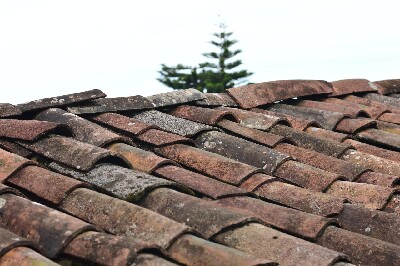
If your roof has even a small leak, you want to fix it before the winter. Snow and freezing temperatures can make a small leak much worse, through the expansion and contraction of roofing materials due to freezing and thawing.
Inspect your roof for any loose or missing shingles. If you consider yourself handy and own basic tools, you can probably repair or replace a damaged or missing shingle or two yourself. But if you discover significant problems, better call a pro.
Fixing a shingle or two is an inexpensive project, more extensive professional repairs will graduate to a more expensive repair. And even after the winter, inspect your roof for any loose, missing or damaged shingles caused by the cold winter weather. Check the yard for any damaged shingles that may have fallen.
If so, submit your request today! Additional questions regarding the Bin There Dump That dumpster rental experience can be answered on our FAQ page or by your local Bin There Dump That operator.Are You Ready To Rent A Dumpster?
Clean and Repair Gutters
You probably don’t think much about your gutters, but they’re crucial to the well-being of your home. Gutters keep thousands of gallons of water flowing away from your house each year, instead of into it. They need your attention now, more than ever.
Leaves clog gutters, and clogged gutters are one of the major causes of ice dams in the winter, which can damage your roof and cause catastrophic leaks.
Pick up a gutter cleaning scoop for just a few dollars at a home center or hardware store. This tool, often bright orange plastic, is specifically designed for the job, with a front scooping edge that forms itself to the bottom of the gutter trough, making it easy to scoop out debris.
An ice dam is a ridge of ice that forms at the edge of a roof and prevents melting snow from draining off the roof. The water that backs up behind the dam can leak into your home and cause damage to walls, ceilings and insulation.
Once all the leaves around your house have fallen, clean out the gutters and spouts, then flush them with water to get rid of all the debris. Inspect the joints. Tighten the brackets if they’re loose.
You might want to invest in mesh guards that will keep leaves and other debris from clogging your gutters in the future. Or, if your gutters have seen better days, replace them with new ones that have built-in leaf guards.
Repair Driveways and Walks
The driveway might not seem like a big deal, but small cracks in your driveway or walkway can quickly expand during winter’s freezing and thawing temperatures. Cracked cement and disintegrating asphalt can be treacherous for your family and for guests visiting your home.
Clean out and repair any damage with driveway filler, then coat with a commercial sealer. Sealing the driveway now will help extend the life of the asphalt through the winter and beyond.
Exterior Paint
If your siding and trim need a touch up, fall typically offers plenty of days that are warm enough to work with exterior paint. You want to paint when the temperature is about 45 to 50 degrees for the best paint performance.
A good paint job is your home’s first line of defense against snow and ice.
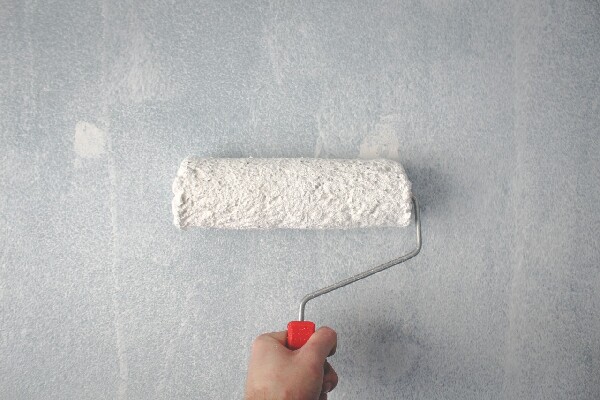
After The Seasons
Even after the winter, it’s good to inspect the outside of your house. Walk around the outside for a spring inspection.
Remove any badly rotten or damaged pickets, boards, lattice or posts and replace them. Check your wood steps and deck for cracks, rotting boards or places where nails have popped up. Get rid of any rotted boards and replace them.
Clean out the debris from your gutters and make any necessary repairs. Those mesh screens probably look like a great option and will definitely be less work for you next spring.
The Yard
Everything looked so pretty under the white blanket of snow. One of the best things about the winter is to completely ignore any yard work. But once the snow is gone, it reveals a big expansive to-do list.
Decaying leaves you never got around to raking, fallen limbs from that big storm, trash that blew in from who knows where, a couple of shrubs that succumbed to ice…these are things that you can find in your yard after a grueling winter.
It's time to rake it all up and get it out of your yard so winter's debris doesn't hamper your lawn and garden's new growth. Fallen leaves and dead foliage can smother plants and foster disease.
Remove old mulch to make way for a new layer once your spring planting is done. Prune away dead and damaged branches. Cut back spent perennials and pull up those sad old annuals you ignored last fall.
Pest Control in the Backyard
One of the easiest things homeowners can do to make their backyard experiences more pleasant is a little pest control. Get rid of any objects that collect water. A bucket, a tire swing, kids toys are all places where water can collect after rain. They become perfect breeding grounds for disease carrying mosquitoes.
Maybe you’ve seen evidence of unwanted furry critters in places around your home. Mice and rats look for sources of food and water and can fit into extremely small spaces. If you don’t want to call a professional, use steel wool to plug any holes that give rodents access.
Give rid of any objects that provide them harborage. If you’re going to be working in woody areas, tall grass or other natural (unmanicured) areas is a breeding ground for pests!
Cleaning and Decluttering Before you Organize
An organized home always starts off clean so, let’s start this home organization guide on how to clean those areas that may be overlooked during your annual spring clean. This spring clean will include basic cleaning, deep cleaning and definitely, clearing out the clutter.
Something that will definitely help with this step in particular is a dumpster rental, and Bin There Dump That provides our residential friendly dumpsters to homeowners and contractors. Use a dumpster rental to help clear out the clutter and let us provide you with an easy waste disposal solution. For more information about renting a dumpster with Bin There Dump That, check out our FAQ page.
Clean What Cleans!
Something to be mindful of when you’re organizing is to clean thoroughly. Sure, we always do the usual cleaning, dust the shelves, wipe down surfaces but we also need to make sure that the things that help us clean need cleaning too. For example, the sink, the grime in the drains needs to be taken care of for it to stay clean and fresh.
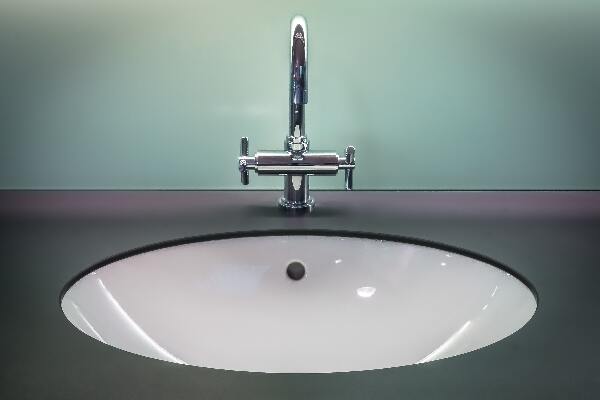
How to Clean the Sink
- Pour ½ cup of baking soda down the drain
- Wash it down with ½ cup of vinegar and a spritz of lemon
- Let that set for a few minutes while it fizzles
- Rinse with hot water
How to Clean the Mattress
- Remove all the bedding, bed skirts and covers and put it all into the wash
- Lift the mattress and the box springs off the bed frame and thoroughly vacuum and dust
- Optional: Wipe down the wall and floorboards behind the bed
- Lay the mattress back into place
- You can use baking soda or prepare a mixture using one cup baking soda, four drops of lavender essential oil
- Use a kitchen strainer and sprinkle the baking soda or mixture over the mattress and let it sit for an hour or more
- Vacuum your mattress thoroughly
Tend Your Garden
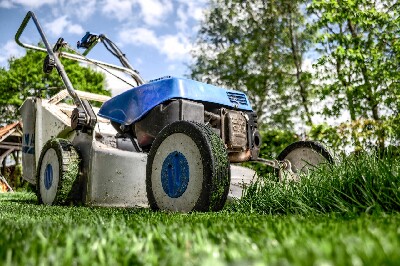
If you haven’t already, it will soon be time to break out the lawn care tools. Give the lawn mower a tune up. Pull the fertilizer spreader, hedge clippers, aerator and edger.
A well-tended garden is a beautiful thing to enjoy out in your yard - but whether it’s a container garden (which is great for growing herbs and flowers) or a plot in the backyard, there is cleanup involved. Broken clay pots, damaged fencing, and weeds are all fodder for a dumpster rental.
Remember to wear gloves, use knee pads or a mat, and be sure to us the proper tools.
Shannon from Home Made Lovely:
Truly my favorite "hack" is that I firmly believe you can only keep what you have proper space for. When our family downsized to a 950 square foot house for a few years, we had to keep less stuff. It was just a fact. I think sometimes people bemoan the fact that they don't have enough room, when really they have too much stuff!
Making Space - After Decluttering and Cleaning - Organize Your Home
Now comes the most important part and the bulk of this guide, how to organize and maximize space in your home. Once everything’s been dwindled down to just the essentials, it will definitely be easier to organize and find a home for each and every item.
Whether you rent or own, everyone complains about the amount of space available for storage. It’s the bane of home or apartment living. When it comes to saving space, there’s no end of ideas.
Kitchen
A magnetic bar attached to the inside of a cabinet door or inside a pantry is a great place to hold metal spice boxes. Attach small magnets to those same containers and stick them to the side of your refrigerator. Feel free to use them to hold up children’s artwork. A magnetic bar on the wall is a great place to hold your knives and other metal kitchen utensils.
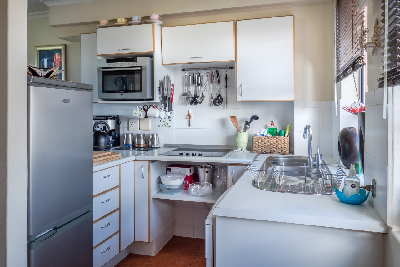
Consider the area under the sink. Bottles, sponges, rags and other items cover the bottom of this space, but what about the area above? Place a wooden bar under the sink to hold the many spray bottles you use every day.
Home office
With more and more people working from home, former bedrooms are getting turned into home offices. That means a computer, printer, phone, fax machine, paper, pens, and a variety of other items.
Computer stations that pull out from small, unused spaces are a great way to save space. And because electronic devices bring electric cord chaos, consider using an empty paper towel roll to stuff the wound cord inside the tame the chaos?
Bedroom (Closets specifically)
Closets are their own special kind of space. No one ever complains about having too much space for clothing. Here’s a quick space saver: Loop a soda can pop tab over the neck of a hanger. Use the bottom loop to hook another hanger. Repeat.
Just like kitchen cabinets, the space immediately behind the door is often wasted. A rod attached to the door is a great place to hang ties and scarves.
Another way to store those items is to hang several shower-curtain rings from the bottom of a hanger. Instant extra storage!
Garage
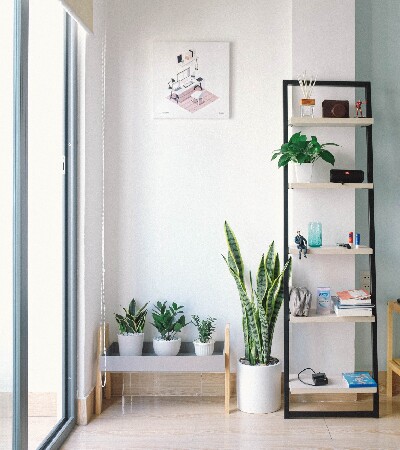
Garages are generally used for two purposes: Keeping cars out of the elements and dumping stuff that doesn’t fit anywhere else. On a related note, storing stuff in the garage because you have no place to put it is, well, a problem.
With a car tucked safely inside your garage, there is plenty of unused space. Put some shelves on the wall above the hood of your vehicle or along the sides. These are great places to store tools, sports equipment, containers holding out of season clothes, and other materials used only occasionally.
Wall system storage designed specifically for garages helps get bikes, garden tools, recycling/garbage bins, coolers and outdoor toys off the floor.
Basement
Most of us have things to do that we keep putting off — working on the basement may be one of them. But just like a garage, it’s housed a lot of unwanted items over the years but you’re always bound to find things you need, sell, donate or just reminisce about.
Start By Decluttering
It’s hard to organize a basement when you’re dealing with a mountain of junk. Before you can start to organize your space, the best thing to do is to rid yourself of all that clutter that’s making your basement look so unsightly, to begin with. You may think that someone in the family may have a use for that crocodile lamp in the near future, but in reality, deep down inside you know that’s not the case. Cleansing your basement of all those old unwanted items is a great way to start with your basement organization project.
Decide How To Use Your Space
Is your basement mostly used as the family movie room or is it more of an entertainment room for the kids? Identifying how your space is to be used is the next step in getting yourself organized. It’s always easier to keep a basement organized if you have a real purpose for it, instead of just using it as a place to store old junk.
Better Storage Options
Throwing stuff you no longer use in boxes in the basement under the stairs is a waste of space. Building storage boxes, adding shelving and organizing with totes are all great options for organizing your basement with things you’ll actually use. Those old unused items in boxes should have gone out the door in the decluttering stage of your basement organization project. That space under your stairs can easily be turned into an enclosed space for storing seasonal items out of view as well.
Options Hidden in Plain Sight
Depending on the layout of your home, there might be a few storage spaces “hidden” in plain sight. Many staircases have space underneath them. A shelving unit or a piece with a few drawers creates plenty of extra room. In some homes, stairways have landings that offer a prime spot for extra storage.
Don’t forget that space under the bed. There are plenty of containers specially made for all sorts of items that slide neatly under the mattresses.
Melissa from Simple Lion Heart:
My number one home organization tip is having less stuff! When you clear the clutter and have less stuff, it’s so much easier to get your home organized...and keep it that way.
Beyond decluttering and simplifying your home, my next favourite tip is using containers to help divide spaces like drawers, shelves, closets and cupboards and give each item you're keeping an individual home. When you give everything you own a clearly defined home or spot to keep it, it’s becomes a lot easier to find what you’re looking for. And put it away when you’re done so you can find it next time too!
Getting your home organized with containers doesn't have to cost a lot. I love repurposing boxes and containers from other things we buy and use, like electronics and empty food containers. Get creative and try to use what you have to get your home organized, functional and easy to maintain.
Getting your home organized with containers doesn't have to cost a lot. I love repurposing boxes and containers from other things we buy and use, like electronics and empty food containers. Get creative and try to use what you have to get your home organized, functional and easy to maintain.

Successfully Organize Any Room by:
1. Surveying and Categorizing
This is the first step in your cleaning out your room action plan. You need to understand just what you have put away so you know what you are up against. Then, you should begin piling together all of your different possessions according to category. This will make things easier later on.
2. Determine What to Keep and Get Rid Of
Some things in your room can be kept and others can be gotten rid of and you need to decide what. Maybe you have some old items that you no longer use, a set of old items collecting dust or items that haven't been touched since the kid left home. This is the perfect opportunity to decide what you need going forward.
3. Get Organized with Shelves and Hooks
One of the best ways to make the most of precious space in your room and get organized is to think vertically. Shelves and hooks provide extra space and are a great way of organizing the many things you have lying around.
4. Sell or Give Away What You Don’t Need
Lots of things in your room don't have to be destined for a landfill. It just takes a bit of work to find them a new home, like hosting a garage sale or you could even sell some of your metal items to a local scrap metal dealer.
5. Label Everything
An underutilized home organization tip is labeling. In a few months' time, it might be near impossible to find what you are looking for in your newly organized room. So you need to make sure you label all your containers, drawers and more so you know where everything is later. The investment in a good label maker will pay dividends as you keep your home organized for years to come.
Create a New Look
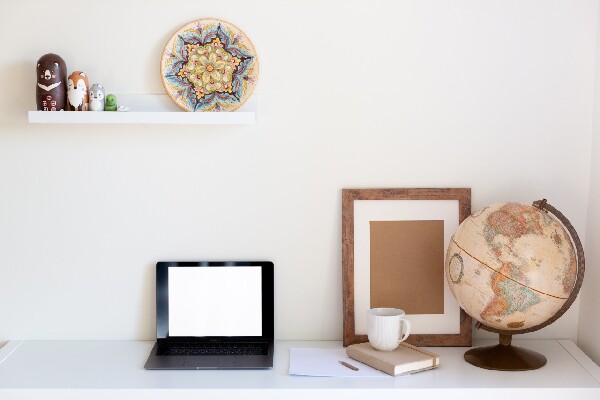
Once you've removed the jumble from your basement, can now view the space properly and come up with constructive decorating ideas. For the budget conscious, a simple coat of paint makes a previously dull, dark basement look brighter and more inviting. A stained or painted concrete floor looks stunning and is easy to keep clean. Divide the room into work and play areas with wood pallet walls or pretty, low-cost curtains — no planning permits required. Be sure to have plenty of lighting; energy-efficient LED lamps are ideal.
An Organized Home Not Enough? Try Minimalist Living
Comedian George Carlin did a hilarious routine about ‘stuff.’ in it, Carlin suggests that your house is a place to keep your stuff….while you go out and get more stuff. For many, these things enrich their lives. For others, they create clutter. For the latter group, the backlash against consumerism has led some to make a 180-degree turn and live a more austere lifestyle. Those seriously opposed to collecting stuff have adopted an approach known as minimalism.
What is Minimalism?
Minimalism organization is about living without: without a lot of clothes, without a lot of furniture, without a lot of well, anything. The belief is that living without material possessions provides one with extra money, time, and freedom. As a society we’ve come to believe that happiness is linked to a bigger television, a better smartphone, newer clothes, another car. Minimalism suggests that none (or almost none) of that is necessary.

True minimalism is not easy to achieve. For most people, decluttering is sufficient.
For minimalists, life is about living with only what you really need. For minimalists, the rule of thumb is “when in doubt, toss it out.” This applies to everything in your home.
How to Get There
For those who spend their entire lives accumulating stuff, living a minimalist organization lifestyle is not easy - it may not even be desirable. If you want to try, though, here are a few steps to get you started.
Like most big projects, minimalism requires motivation and a plan. Start with small goals. Take each room step by step and ask yourself whether an item is something you need or something you want. If it’s something you need, put it back, if it’s something you want, donate, recycle or get rid of it.
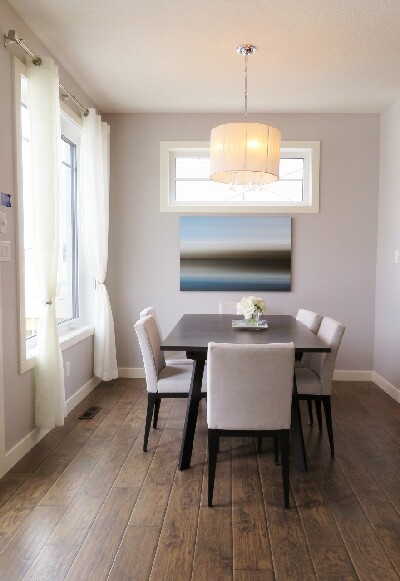
Let’s be clear: No one is suggesting you eat off the floor. A table and a few chairs are reasonable and necessary. But how many sets of dishes, silverware and glasses do you need?
Do you need a toaster and a microwave? Do you need a microwave and an oven?
Applied to everyday life, the Pareto Principle suggests that most of us wear 20 percent of our clothes 80 percent of the time. That means the vast majority of tuff in your closet does nothing more than collect dust. The Pareto Principle applies to many aspects of our lives.
But minimalism is more than “If you don’t use it, get rid of it.” Minimalism suggest that even if you do use it, you still might get rid of it.
The minimalist organization lifestyle is not for everyone - in fact, it’s probably not even for most people. There’s no hard and fast line that, once crossed, turns you from an avid organizer to a minimalist. Like many things in life, this is a continuum. And all families need to figure out what approach is best for them.
Need more assistance in adopting a minimalist organization lifestyle? For minimalist and home organization tips, you can't find a better blogging resource than the author of The Minimalist Home: A Room-by-Room Guide to a Decluttered, Refocused Life and The More of Less: Finding he Life You Want Under Everything You Own, Joshua Becker
FREE EBOOK
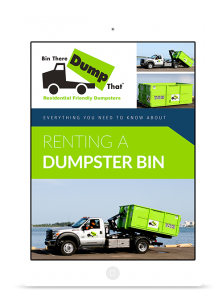
Everything you need to know about renting a dumpster
Download NowRequest a Free Quote Near You!
Friendly, professional customer service, plus fair pricing, equals value.
Request a Free QuoteLeave a Review
FREE ESTATE SALES GUIDE

The Definitive Guide To Hold A Lucrative Estate Sale
Learn MoreFREE CALENDAR
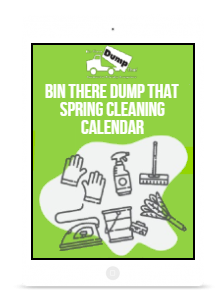
28 Day Cleaning Schedule
Download MoreRequest a Quote Near You!
Friendly, professional customer service, plus fair pricing, equals value.
Request a Free QuoteBook your Residential Friendly Dumpster today!
Friendly, professional customer service, plus fair pricing, equals value.


